The World on a Plate in State 48
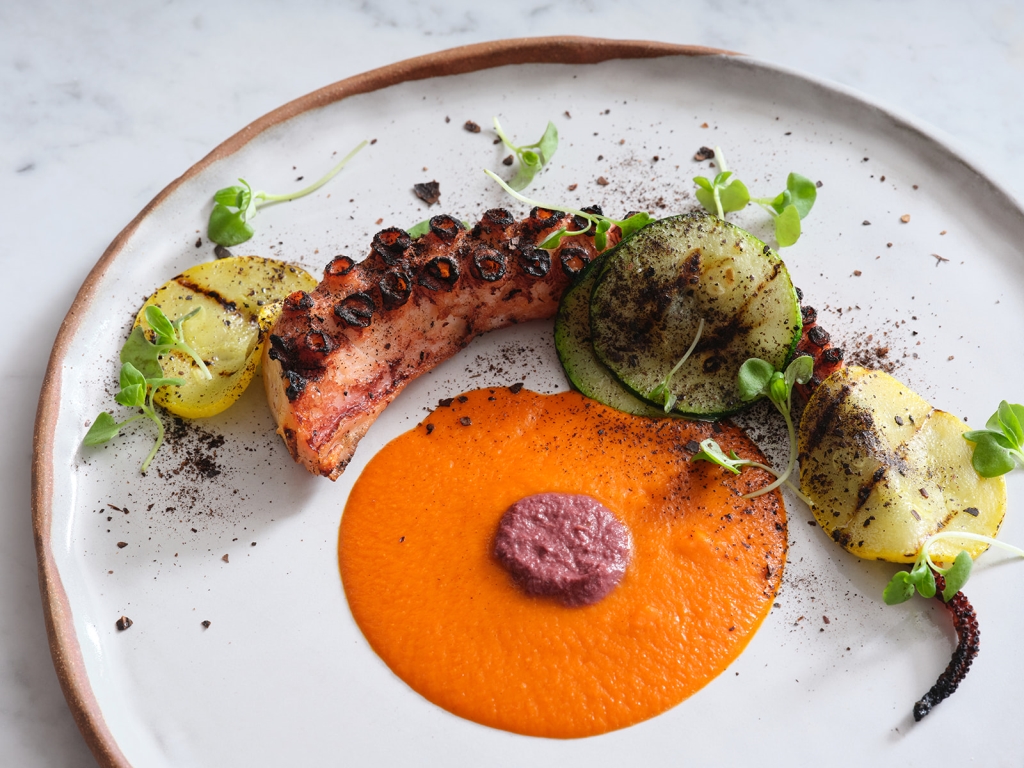
Writer Shannon Severson
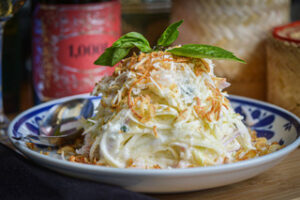


Tucson-raised American intellectual and writer Susan Sontag said of travel, “I haven’t been everywhere, but it’s on my list.” There are so many places to see in the world, terrain to behold, people to meet, cultures to experience and food to taste. It can even feel a bit daunting — or a strain on the pocketbook — to consider all the places you’d like to visit.
Fortunately, our Valley is a vibrant mosaic of global cuisines, with acclaimed restaurants specializing in authentic dishes from every corner of the map. This summer, Images Arizona invites readers to embark on a culinary odyssey right here in our backyard.
Grab your appetite and sense of adventure as we take you from the sun-drenched vineyards of France to the bustling izakayas of Japan, the sizzling street food of Thailand and the rustic trattorias of Italy — all without leaving Arizona. Get ready to stamp your virtual dining passport as we explore the world, one delicious plate at a time.
Francine
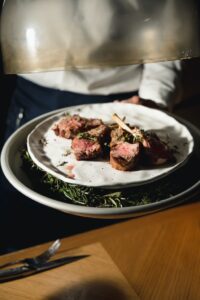


Executive Chef Remy Lefebvre has cooked in kitchens around the world, from Michelin-starred restaurants to luxury hotels. At Francine, he returns to his French roots, combining a passion for sourcing and utilizing the freshest products with celebrity chef-founder Laurent Halasz’s vision to bring “the cooking of the sun” to the Valley of the Sun.
House-marinated olives, ratatouille, moules frites and olive oil cake scented with orange blossom syrup evoke visions of breezy days on the Mediterranean coast. Francine’s neutral interior with warm wood and brass accents, beamed ceilings, greenery and an inviting patio welcome guests to “le Midi.”
Lefebvre notes the cooking of the French Riviera is influenced heavily by the Roman Empire, with Moorish flavors from Spain, where he spent 10 years at the outset of his professional career. His most popular dishes include grilled octopus with arrabbiata sauce — an echo of that Italian influence — and a dish of marinated and grilled rack of lamb.
“The menu is French, yes, but far from classic, old-school bistro,” Lefebvre says. “It’s representative of my cooking and style of cooking — light and bold flavors, driven by what is done now in the Mediterranean. It’s refreshing brasserie fare that is high quality with accessible pricing and careful sourcing. We want people to dine often and not be limited by exclusivity of pricing.”
The freshness of ingredients is an area where Lefebvre is uncompromising. He works with local purveyors such as Noble Bread and has fostered direct relationships with fishermen for full transparency of provenance. He even has someone who shops weekly at the Santa Monica Farmers Market, seeking out the best seasonal produce, mostly organic.
Seasonal cooking means Francine’s menu will always have new flavors to try. This summer, Lefebvre is planning dishes with creamy burrata, marinated artichokes a la Grecque, branzino wrapped in fig leaves and flambeed with pastis, and a duck dish with fig dressing reminiscent of the Peking duck he prepared at Singapore’s famed Raffles Hotel.
Since arriving at Francine in November, Halasz and Lefebvre have worked to steer the menu back to its origins in the kitchen of Halasz’s mother, the restaurant’s namesake. Lefebvre calls it a dramatic, positive change; though sometimes patrons are shocked when favorites are removed, he says many well-loved dishes remain and are being improved and refined.
“It’s the start of excellence here in Phoenix,” Lefebvre says. “Plenty of young, new chefs opening concepts, showcasing what they know and their own story. That’s what it should be: not corporate but food made with love and care.”
Hai Noon
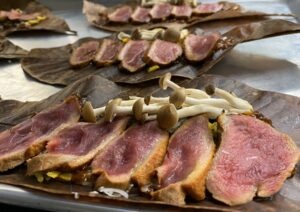


Legendary chef Nobuo Fukuda’s Hai Noon is a small restaurant that’s getting huge accolades. The 2007 James Beard Best Chef Southwest Award winner’s restaurant is set in the Papago Motor Hotel, a renovated midcentury building with variegated stone walls, banquettes and barstools reminiscent of its 1960s origins. The food and inventive cocktails served in this space are inspired by Fukuda’s years of experience and his two years of travels across Asia after closing his famed Nobuo at Teeter House in downtown Phoenix in 2021.
Open Tuesday through Saturday evenings, the modestly priced dinner menu is served from 5 to 9 p.m. Highlights include fusion dishes like grilled shishito peppers with soy sauce, queso fresco and bonito flakes; coconut curry-marinated lamb with mango-fennel salad; and kelp-cured seabream (kobujime) with cherry blossom and yuzu zest. Nobuo’s well-known spoons feature items such as grapefruit and avocado, ceviche with myoga and taro chips, or oysters.
The late-night menu, available Fridays and Saturdays from 9 p.m. to 11 p.m., offers buns filled with pork belly and pickled mustard greens, tempura-fried mushrooms and panko-fried soft-shell crab.
For the full Chef Nobuo experience, diners should try the six-course tasting menu on Wednesdays, which changes seasonally.
“It is by far the best way to experience Hai Noon, especially for first-time guests,” says Kuni Fukuda, Chef Nobuo’s son and the restaurant’s general manager.
Hai Noon’s ultimate showcase is the Japanese tradition of omakase, offered two Thursdays each month. Parties of four maximum must reserve at least two weeks in advance for this unique experience in which Chef Nobuo personally crafts and narrates a stunning selection of dishes. Each omakase night is unique, and ranges in price from $225 to $250 per person.
Lom Wong/Mr. Baan’s Bar and Mookata
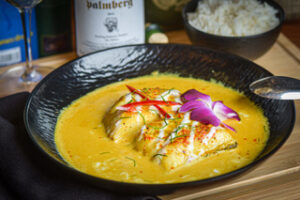


Thai food is extremely popular, but American food enthusiasts often see the same well-known items on the menus of restaurants in the U.S. James Beard Award semifinalist nominees Alex and Yokata “Sunny” Martin have taken what began in 2018 as a pop-up restaurant in their backyard to two brick-and-mortar restaurants in Phoenix: Lom Wong and Mr. Baan’s Bar and Mookata, serving food and drinks that honor the lesser-known gustatory traditions of Thailand’s people and culture.
The culinary couple met while Alex was living and studying in Thailand. They connected over food and a mutual desire to communicate their small Thai village experiences, where family and friends shared their techniques, regional ingredients and most treasured traditions.
“We built our concept on sincerity,” Alex says. “That’s the only way we would do anything. We are sincere to our concepts, recipes and vision.”
Alex notes that there are more than 70 ethnicities in Thailand, and culinary arts are a way to preserve the uniqueness of indigenous communities and ethnic minorities while building connections with others. Sunny is from the Lanna culture, and the two highlight her own recipes as well as those from the Moklen community, known for its seafood-centric, spicy, no-waste cooking.
A meal at Lom Wong is like visiting a Thai home, with a “punk rock fine dining” service style that is casual and communal but delivers bold, authentic flavors.
“It’s a service style that is unlike any European coursing,” Alex explains. “We don’t bend on our recipes or on how we bring out the courses because we want to protect the experience. Everything is meant to be shared, and each dish is part of a whole; it’s not meant to be one at a time. The flavors wouldn’t make sense if we served it one at a time.”
Must-tries include yam mamuang boran (green mango salad), gai tawt won pen (fried chicken) and ae kan khlak ti (Moklen sea bass curry). Adventurous diners should opt for the “arai kodai,” which means “I’m down for whatever” — a phrase that Alex used when wandering through restaurants on the far outskirts of Bangkok with an empty belly and a Thai-to-English dictionary that was useless for what the places were serving.
“Guests can note dietary restrictions and spice tolerance, but we will cook a meal that pushes you a little bit,” Alex adds. “You’ll realize it’s fine, and we will also give you dishes that will cool your palate.”
At neighboring Mr. Baan’s Bar and Mookata, Sunny and Alex serve refreshing Thai-inspired drinks alongside charcoal-grilled skewers and a late-night menu featuring items like Thai-style hot dogs. The star of the show is the mookata tabletop grill ($59 per person), which has a domed center for cooking meats and a moat of pork broth for simmering vegetables, noodles and tofu — a rare find in the U.S.
Whether you opt for Lom Wong or Mr. Baan’s Bar and Mookata, you are sure to taste and learn about a side of Thailand you might never otherwise experience.
Sfizio



Calabrian-born chef Rocco Pezzano and his family have a fitting tagline for their restaurant, Sfizio: “Eat like you’re in Italy, without the jet lag.” Diners have happily taken on that challenge, enjoying Pezzano’s family recipes and hospitality. The word “sfizio” itself means “the thing that satisfies your craving.”
If your cravings are for fresh pasta like short rib rigatoni orni, frutti di mare with mussels, clams, calamari, shrimp and a light spicy red sauce, you’ve found the right place. Perhaps you envision tucking into a comforting chicken Parmigiana or pan-seared pork tenderloin pizzaiola or indulging in a big slice of stone-fired pizza topped with white sauce, prosciutto, arugula, shaved Parmesan, ricotta and mozzarella — Sfizio has all that and more.
Pezzano keeps the menu short and manageable, changing specials every two to three months to fit the seasons and what is available. This summer, he plans to offer more wine tastings in which vintages from different regions will be paired with the food of those regions in three-course menus.
Also on the menu is an invention of Pezzano’s own making: sfizini, which comes from a childhood memory.
“My mother cooked in the morning,” he recalls. “She was always making a sauce while we played outside. She would hollow out a little piece of bread and stuff in some meat, sauce, a meatball or some chicken. Sfizini is a rendering of that memory. We serve a lunch portion with a choice of two fillings, with a salad alongside.”
Pezzano moved to the U.S. at age 25. In his years of cooking away from home, he longed for his southern Italian hometown “in the toe of the boot” and his mother’s cooking. To this day, her food is the benchmark against which he measures everything he serves.
“I have a soft spot for the south of Italy,” Pezzano says. “My main goal is to get the best ingredients. Italian food is the search to find the best ingredients — San Marzano tomatoes from Italy, flour from the south of Italy, some of our cheeses. We make our own mozzarella. We make all our pasta by hand — the gnocchi, everything. We make our own breads and pizza dough. It’s more work, but at the end of the day, it’s using the best ingredients. The simplicity is what makes Italian food really good.”
The hard work of Pezzano and his family has paid off in rave reviews from customers. He credits his wife and two children with always pitching in and helping him keep business humming along.
“People like that we are a scratch kitchen and a family business,” Pezzano says. “They are shying away from corporations. I’m here with my wife and kids. Customers like the contact and the fact that we are here as a family. We try to make everyone comfortable like they’re in our home. We take care of everyone directly. My family has been a big help. Sometimes a restaurant can take a family apart, but we got closer. We are united.”
